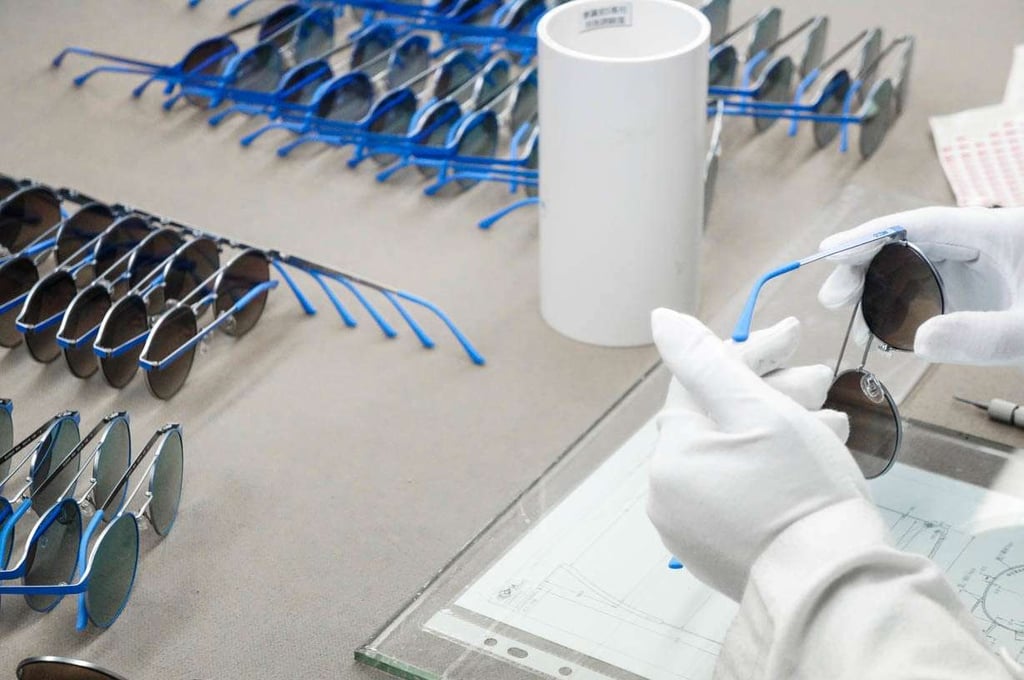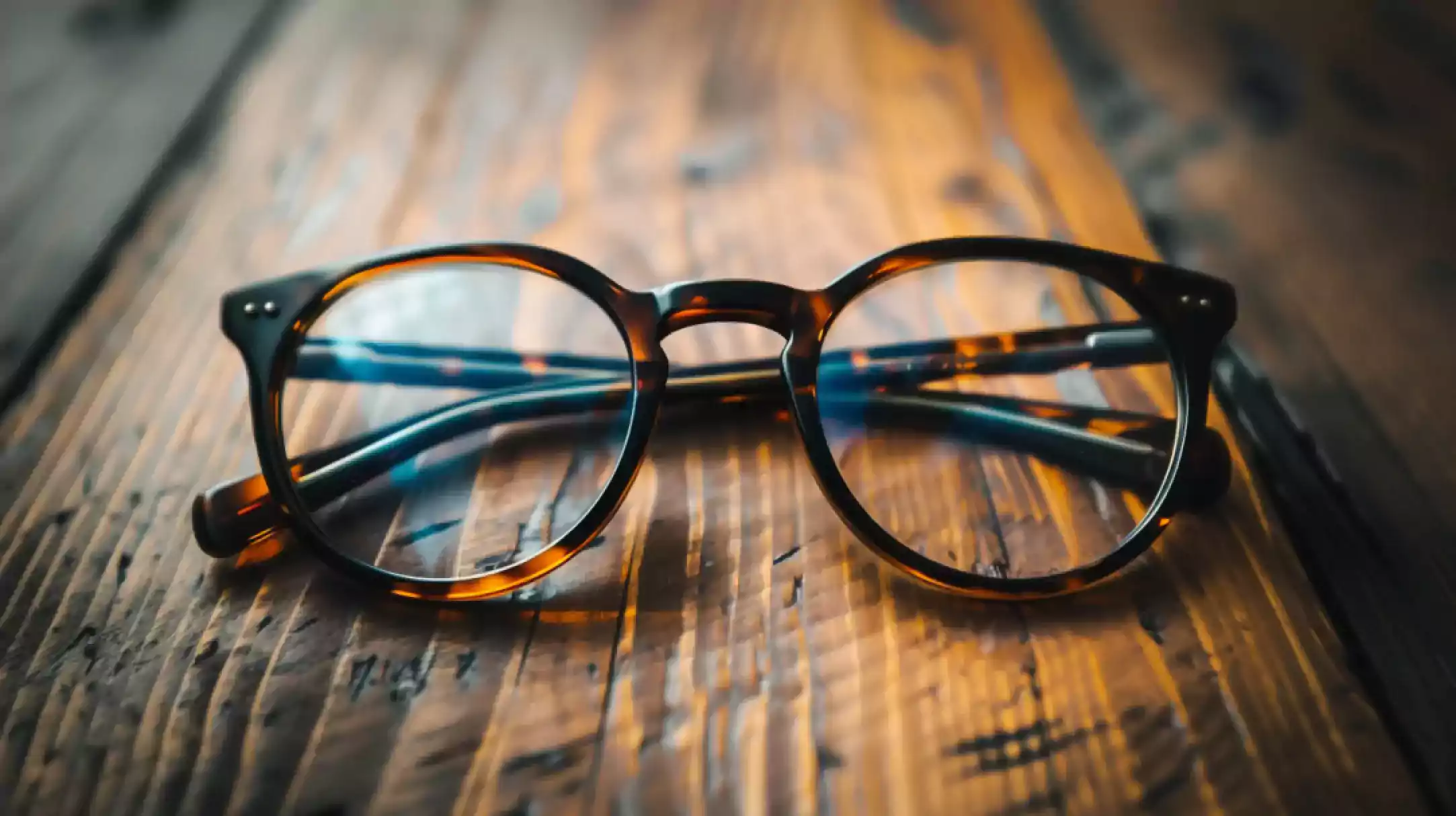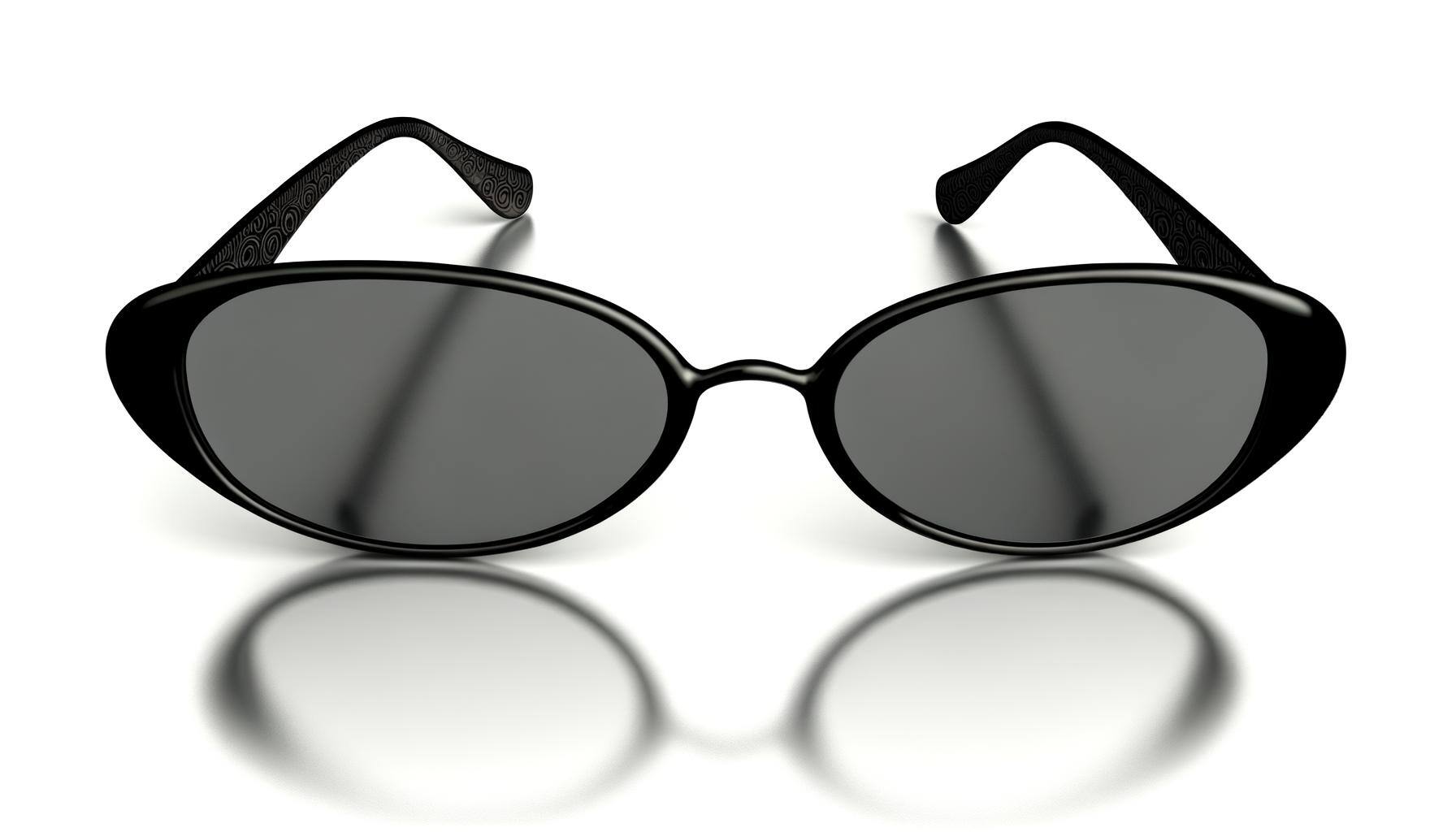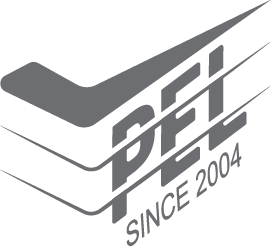Top quality eyewear manufacturing requires careful planning and some thought, which tends to be a time consuming exercise. To make the entire process easier for you we’ve compiled the Ten Best Practices you must follow to secure the best possible eyewear available.
1. Find A Manufacturer That Produces Exactly What you’re looking for
First things first, you need to establish whether the manufacturer is, in fact, a manufacturer. There are opportunistic (and well organized) traders out there selling a range of goods they don’t actually manufacture themselves. The very first thing you want to establish when looking at new a supplier in China is if the manufacturer you want to use is an OEM. We explain this in more detail in the article: The Best Eyewear Manufacturers in China, and How to Source Them.
A key factor to look for in your searc for qualirty eyewear manufacturing is the capability of the Chinese factory i.e. their expertise, and experience in manufacturing the exact same product you intend to have manufactured.
If you browse Alibaba for a few minutes you’ll find a vast amount of suppliers, often registered as manufacturers, offering products that are very different in nature. This isn’t necessarily a warning sign as there are plenty of reliable manufacturers selling, related products (e.g. sunglass manufacturers selling reading glass frames as a simple example). That being said, if you are looking specifically for quality reading glass lenses, find a lens manufacturer rather than a frame manufacturer selling lenses as a side business.
They tend to be very small trading companies, lacking both product knowledge and long-term planning. These are the suppliers that you often find offering small MOQ’s, and they tend to sell anything from phone chargers to party hats. These traders are rarely, if ever, able to offer a long-term product supply, not to mention compliance with foreign product safety standards and substance regulations.
2. Make Sure the Manufacturer’s View on Substance Control Is a Priority (Nothing Miami Vice Don’t Worry)
Regulating the substances used in the manufacturing of eyewear is essential for both safety and quality, as you will see in the article on Acetate Frames and whether they are destroying sunglass lenses during shipping. So you need to be sure that your manufacturer’s substance controlling is in on point.
Certain substances, such as Lead Phthalates, Cadmium and Formaldehyde are either banned or strictly regulated in most markets – especially in children’s products and items such as sunglasses that are frequently used.
In the United States, the legal situation is somewhat fragmented, if not more flexible. In the State of California for example, substances in consumer products are regulated by California Proposition 65. However, products that contain regulated substances are still allowed to be sold in the state considering they add a warning label to the product or its packaging.
But no matter what the law states, warning labels advertising that the consumer might become impotent or get cancer from using your product is just plain bad for business. Importers need to be aware that only a minority of Chinese manufacturers are aware of the chemical content in their products. Those who are, also tend to be those who can show previous compliance with product safety directives, which is what you want to see.
The issue doesn’t lie with the final assembly manufacturer but with its sub-suppliers of raw materials and components. Thus taking steps to ensure you meet compliance with applicable substance regulations is a priority; speak with a dedicated eyewear QC Company that offers these services to run through the details, or read more on How Eyewear Quality Inspection Can Put Your Brand Ahead of the Game.
3. Establish Whether The Manufacturer Exports to Established Markets
%20(1).png?width=1024&name=Untitled%20design%20(43)%20(1).png)
A reliable Chinese eyewear manufacturer doesn’t necessarily have to supply only established markets such as United States, Europe, Japan and Australia, but it doesn’t hurt. There are plenty of manufacturers that are really good that focus on markets in Asia, Africa and South America – or the domestic Chinese market.
That being said, manufacturers with their main focus on developed markets tend to maintain a higher quality standard, with lower defect rates and offer compliance with foreign product safety standards, and for that reason looking at their main export markets is good practice.
4. How Safe Is Safe? Product Safety Compliance Needs to Be 100% Accurate
Buyers based in the United States, Europe, Japan and Australia generally have to pay specific attention to compliance with one or more product standards (e.g. CE and CPSIA). There are an array of product safety standards and regulations to keep track of, such as:
- Chemical and substance regulations (e.g. REACH and FHSA)
- Product packaging regulations (e.g. PPPA)
- Physical and mechanical regulations (e.g. ASTM and EN ISO)
- Toys and children’s product regulations (e.g. EN 71 and CPSIA)
- Textiles regulations (e.g. OTEXA)
- Labeling regulations (e.g. Tariff Act of 1930)
Confirming which standards and regulations are applicable to your product is a challenge you will have to pay specific attention to, reliable QC companies can assist you by providing specific details regarding your region, if they are worth their salt.
.jpg?width=320&name=shutterstock_628526801%20(1).jpg) It is thought that less than 5% of China’s manufacturers are able to show compliance with foreign product safety standards. You can find some examples in the article What To Do When Eyewear Manufacturers in China Screw up Your Order. However, asking for previous compliance is a critical factor when making a supplier selection. This is not to say a supplier without previous compliance can’t manufacture compliant items, but the risk is obviously much higher.
It is thought that less than 5% of China’s manufacturers are able to show compliance with foreign product safety standards. You can find some examples in the article What To Do When Eyewear Manufacturers in China Screw up Your Order. However, asking for previous compliance is a critical factor when making a supplier selection. This is not to say a supplier without previous compliance can’t manufacture compliant items, but the risk is obviously much higher.
Compliance is critical when importing from China, importing noncompliant items may result in a forced recall, or having your cargo seized by customs, which leaves you without stock to sell. Liability regarding personal injury or harm is a major factor to consider as well, you could be liable to lawsuits and large payouts if your products were identified as the cause of harm.
While compliance doesn’t provide you with legal immunity in case anyone would get injured, product safety standards (and serious noncompliance penalties) are put in place for a reason.
5. Is your Manufacturer Using Good In-House Quality Management Systems?
Defects are a part of any business that work with physical products, and it’s not a matter of “if” there will be defective items, but how many. To minimize the number of defective units, the manufacturer must monitor quality before, during and after production. This procedure is called a Quality Management System or QMS looks roughly like this:
- Inspection of materials and components supplied by subcontractors
- Checkpoints performing visual inspection for spotting any cosmetic defects and functional testing (to spot functional defects) during production
- Visual inspection and functional testing of fully assembled units
A Quality Management System will typically also specify how defective units will be dealt with and records kept for future reference to provide statistics.

The most common QMS used by Chinese manufacturers is ISO 9001. A compliant supplier will provide you with an ISO certificate, and records from previous inspections as a start and a manufacturer providing this even before you ask for it is a good sign. In my opinion, what really matters is not the type of QMS (unless a specific protocol is legally required for a certain product), but that they provide a detailed explanation of how their QMS is set up – and support such claims with records. China has come a long way with this in recent years, but proper QC can’t be stressed enough.
6. Look for Significant Registered Capital
The registered capital is not specified on a Chinese business license, however, by scanning the QR code on the license, you’ll be taken to a web page where the company’s information is stored where you can find the registered capital. The total amount of registered capital is a very good indicator of a manufacturer’s scale of operations. Common sense should tell you that if you see a company with a small amount of registered capital they are more likely to be a trading company than a manufacturer. What is considered to a sufficient amount of capital varies between different industries though, and you can compare a few companies to gain insight into the industry standard
For Chinese eyewear manufacturers, RMB 6,000,000 might be a decent amount, while you would think twice about working with an electronics manufacturer with anything less than five times that amount.
7. Does the Pricing Make Sense?
%20(1).jpg?width=810&name=Untitled%20design%20(7)%20(1).jpg)
You would think that this would be at the top of the list, and although pricing is important, it’s only relevant when attached to a product that is compliant with applicable product safety standards, in your country. It would be a complete waste of time to negotiate prices with a manufacturer that’s unable, or unwilling; to comply with product safety standards in your country, to begin with, and nobody likes to waste time!
How much will this cost you? Not the right question! You need to look at The Struggle Between Cost and Quality in Eyewear Manufacturing
Heed the warning - A low price is not always what it seems. Many suppliers deliberately quote low prices in order to get the buyer’s attention, with the intention to either increase the price moments before the order, or use substandard materials in manufacturing. Good vetting and Quality Control can prevent all this from happening.
8. High-Quality Standards, Not Just Good Quality
Most would assume that the definition of a “good manufacturer” is one producing high-quality items, but this isn’t always the case. H&M, for example, can’t compete with Dior regarding quality and design, but based on the former’s soaring share price in the last decade, nobody is going to be calling H&M a “Bad Company”.
This applies to Chinese manufacturing as well; there are reliable and highly sophisticated manufacturers specializing in the low market segment. There is nothing wrong with that, but make sure the supplier is able and willing to manufacture products matching your quality requirements before any money changes hands. You need to understand The True Cost of Eyewear Quality Control and Why it Saves You Money
9. Wisen Up About Intellectual Property Before Producing Eyewear
Intellectual Property (IP) theft is a significant concern for startups and small businesses manufacturing and importing from China. Everybody knows that manufacturers in the region have a reputation when it comes to IP theft. However, what’s the reality of a manufacturer stealing your IP and flooding the market to make millions, if you take the necessary steps there won’t be any need for concern.
Intellectual Property protects the creations of a person or company, in this case, your eyewear. Companies such as Warby Parker currently don’t have issues with IP because they aren’t specifically unique, they are still building a brand and the fact is Warby Parker glasses are ONLY available from Warby Parker at the moment, so you won’t find it from a street vendor for example. That being said, some companies starting out would need to look at protecting their IP. This may, as an example, include patents, or trademarks. For more knowledge on Trademarks, you can read The China Trademark Process Explained.
Generally, you would look to protect anything included in your product specifications:
- Product design drawings
- Logos and brand names (Both English and Chinese)
- Functional descriptions
- Packaging design etc.
10. Clearly Define Your Design Services From the Get-Go
%20(1).png?width=1024&name=Untitled%20design%20(39)%20(1).png)
Product design must be adjusted to a manufacturer’s production capability, in terms of dimensions, materials, components and tolerances. Disorganized manufacturers tend to be found lacking in this department, and are thus unable to provide you with information about certain technical limitations that your product design must be adjusted to.
It’s critical that a manufacturer can tell you what they can do, and what they can’t do. Eyewear manufacturers should be able to offer you in-house design support – assisting with product labeling design, packaging and more.
Make sure you are on top of everything your manufacturer is doing to ensure you get the best possible quality eyewear. And if you’re ever in any doubt get in touch with one of our consultants at PEL to give you the most up to date information available.
Have you struggled with eyewear manufacturers in the past but couldn’t identify the root of the problem? Any advice or cautionary tales for our readers to add to the 10 best practices?
Please share your questions or experiences with us and our community by leaving a comment below.


%20(1).png)




.jpg)



